Fu He Hui
Plant-based fine dining for vegetarians and carnivores alike, Fu He Hui was rated the top restaurant in Shanghai at the 2024 Asia’s 50 Best Restaurants awards, snagging the #19 spot on the entire continent.
READ MORE: 14 China Restaurants Make Asia's 50 Best 2024

Image by Sophie Steiner/That's
Situated amongst the leafy plane tree-lined streets of Shanghai’s former French Concession, Fu He Hui extends over three floors of earth tone-hued private dining rooms.
With its minimalistic, Zen-like aesthetic and understated elegance, this premium vegetarian fine dining oasis seems a world away from the hustle and bustle of one of the globe’s most populated cities lying just across its threshold.

Image by Sophie Steiner/That's

Image by Sophie Steiner/That's
Guests will find only set menu offerings (priced at RMB988 per person) that rotate seasonally to highlight the freshest of local fare, matched with optional regional tea pairings (for an additional RMB298 per person).
For both lunch and dinner, diners are presented with a series of 10 courses – each focusing on one key vegetable, fruit, or flower.
 Canapé – Rice flour crisp, avocado, green bell pepper, century egg white jelly. Image by Sophie Steiner/That's
Canapé – Rice flour crisp, avocado, green bell pepper, century egg white jelly. Image by Sophie Steiner/That's
A crash course in the diversity of Chinese agriculture, the venue pays tribute to quality seasonal ingredients from across the country, serving meat-free creations by head chef Tony Lu.
Working with regional farming communities to source produce, Chef Lu artistically presents each course employing time-honored preparation methods dating back to the Ming and Qing dynasties.

Image by Sophie Steiner/That's
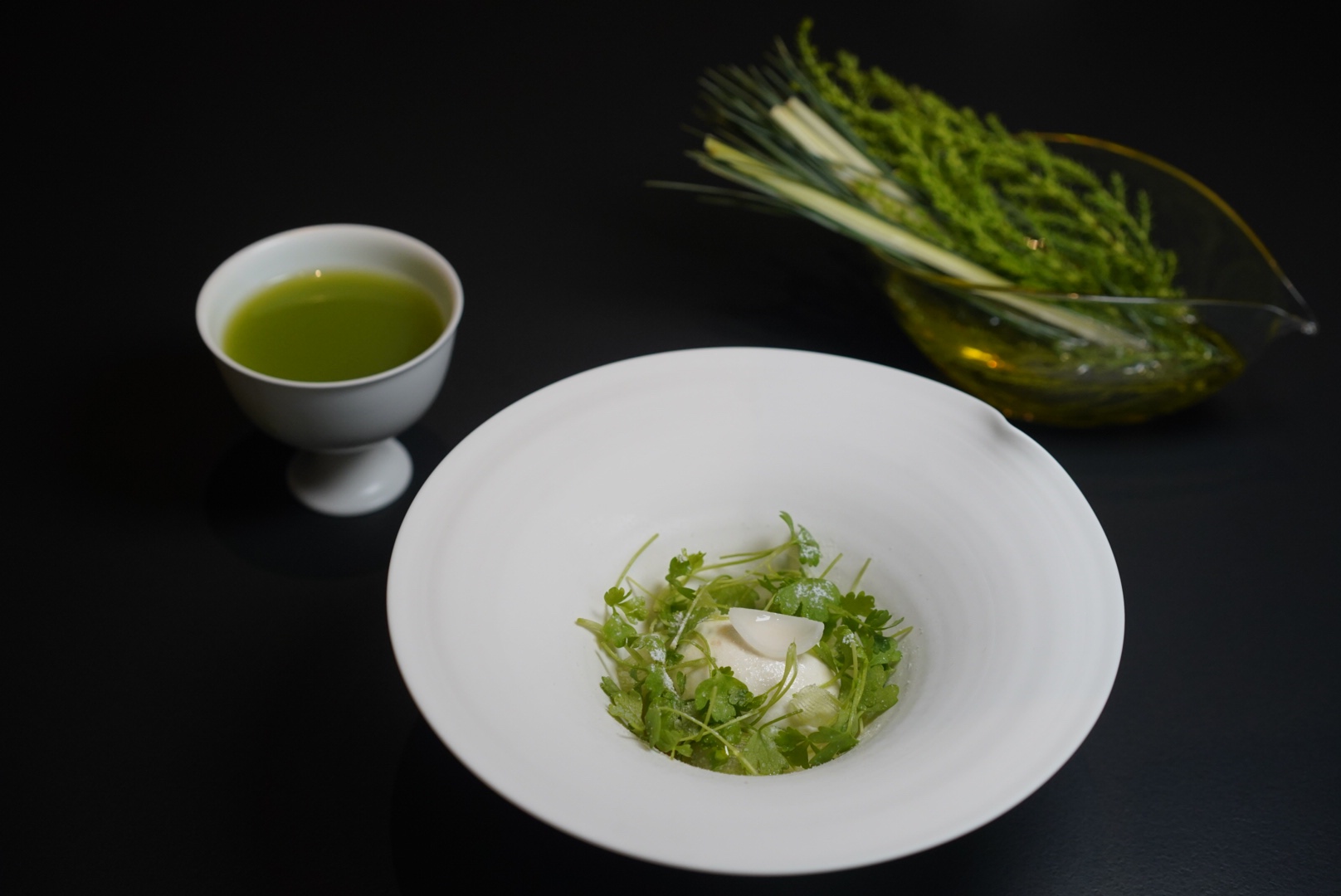
Image by Sophie Steiner/That's
The verdant range of greens of the Qing Dynasty is the common thread that weaves together all of the dishes in the spring menu lineup.
From lime to jade to emerald to turquoise, it truly is a 50 Shades of Green experience.
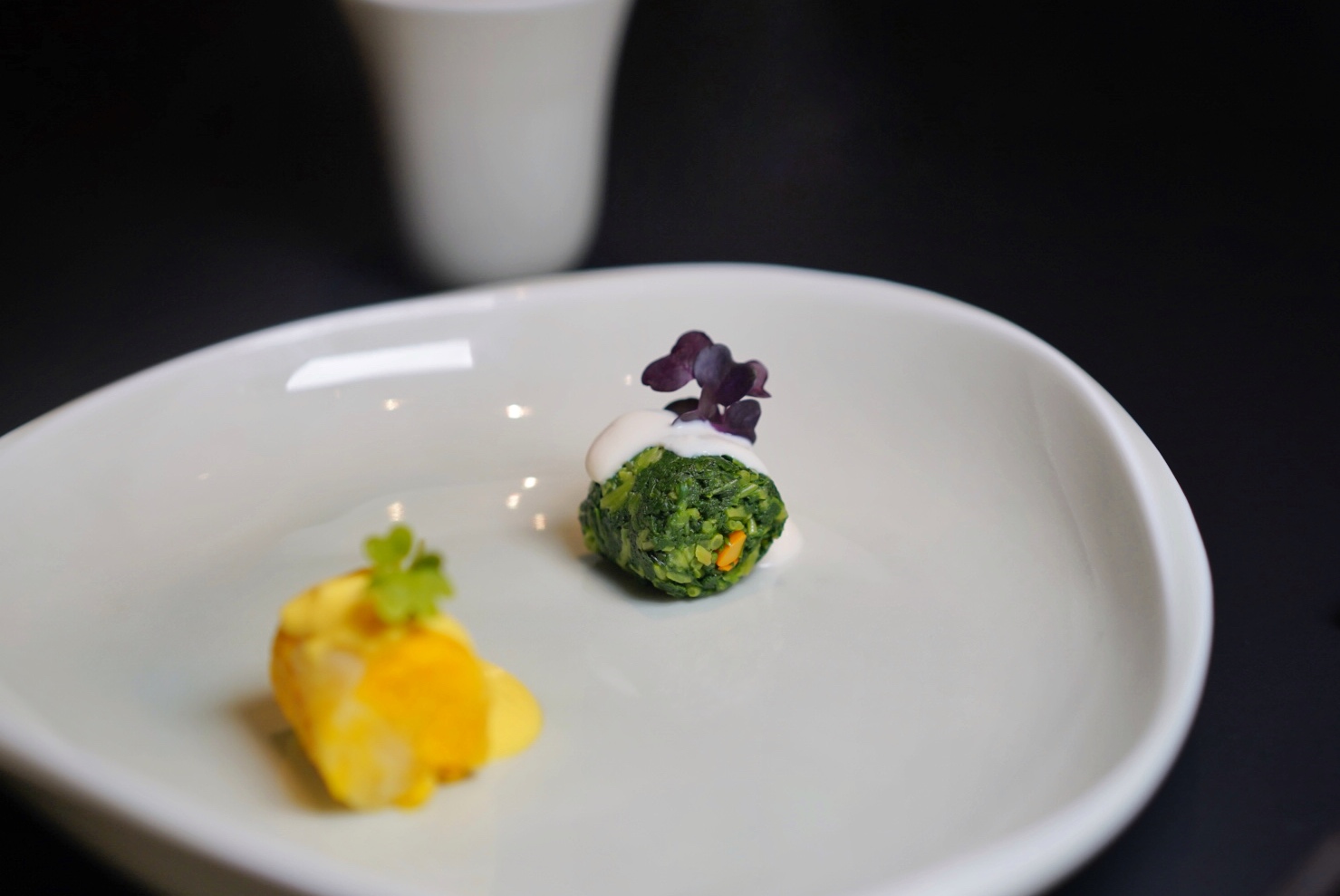
Image by Sophie Steiner/That's
A duo of greens from light to dark, the Chrysanthemum course first features grassy malantou (马兰头) – or sweet infant greens from the chrysanthemum family – pleated and rolled before being dribbled with a savory tofu sauce.
A play on Beijing-style jiemo dun (芥末墩) – a golden Napa cabbage and mustard dish – follows, with this rendition offering a zippy mustard seed, yellow bell pepper, and pine nut sauce, garnished with mustard cress.

Image by Sophie Steiner/That's

Image by Sophie Steiner/That's
Handmade silky 'dragon’s beard' noodles (龙须面) are steeped in a cold bitan piaoxue (碧潭飘雪) Sichuan green tea and tomato broth, accented by aromatic jasmine petals as the Tomato course.
As the name suggests, the predominant flavor and ingredient of the dish is a trio of these fleshy fruits – hailing from Chaozhou, Yunnan, and a green variety from Chongming Island – that are steeped in the tea before being clarified into the soup base.

Image by Sophie Steiner/That's
A lick of green tea oil adds fragrant depth, leaving diners’ lips slick and satiated.

Image by Sophie Steiner/That's
Akin in presentation to a modern-day samosa, the Carrot course actually showcases a traditional dish dating back to the Qing Dynasty’s imperial kitchen, a three-sided spring roll of sorts.

Image by Sophie Steiner/That's
Made from a crisped wonton wrapper, the puff is stuffed with mashed carrot, kohlrabi, black wood ear fungus, and bean jelly to mimic the meat jelly cold dishes eaten in the imperial court.

Image by Sophie Steiner/That's
Paired with Phoenix oolong tea – named after the Phoenix Mountain where it comes from in Chaozhou’s Da’an village – the sweet-smelling notes of honey and orchid bring out the wild carrot’s treacly undertones.

Image by Sophie Steiner/That's
Rooted in Linhai, Taizhou's 'fortune soup' (发财羹), the Taro is a sticky soup, traditionally consumed during the start of Chinese New Year, alongside well wishes of health and fortune.
Thickened by this beloved root vegetable (for which the course is named) and hand-pulled sweet potato vermicelli, other regional and seasonal vegetation makes a showing – like Yunnan kidney beans, Suzhou water bamboo shoots, tofu puffs and brassica.

Image by Sophie Steiner/That's
Like a terrarium, the Bamboo Shoot course is meant to remind diners where our food actually comes from – the earth.
'Sprouting up' from a dusting of edible soil – made from whole wheat bread crumbs, black bean sauce and kale powder – a blend of Anji spring bamboo shoots and Ningbo pickled mustard greens are wrapped inside dried tofu skin to playfully resemble the star ingredient of the dish.
They are surrounded in the soil by assorted flora – ice lettuce and dehydrated Yunnan tea tree mushrooms.
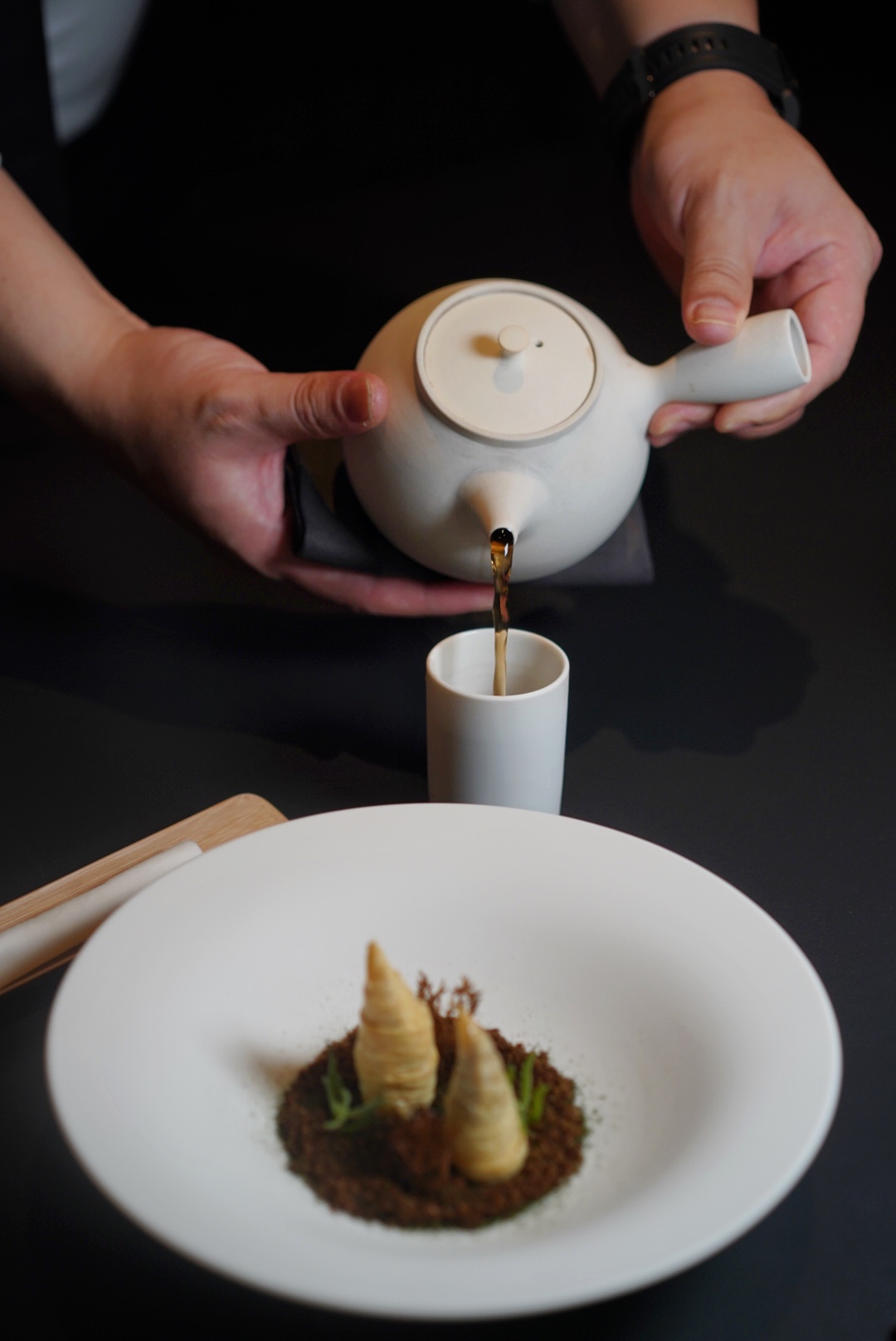
Image by Sophie Steiner/That's
Like being delivered a plate by Mother Earth herself, diners can see (and taste) the growth cycle, all within the confines of the restaurant’s walls.
 Morel Mushroom – Quinoa, water chestnut, quinoa seedlings. Image by Sophie Steiner/That's
Morel Mushroom – Quinoa, water chestnut, quinoa seedlings. Image by Sophie Steiner/That's

Image by Sophie Steiner/That's
White asparagus is currently in season, and this coveted spring vegetable is the focal point of the Huangshen course, roasted and tender when contrasted against its grassier Shandong green asparagus counterpart.
The spears are further augmented by the natural sweetness of wild carrots grown in the highlands of Lanzhou, near the top of the Qilian Mountain, all plated together like a verdant offering, a bouquet of nature’s bounty.
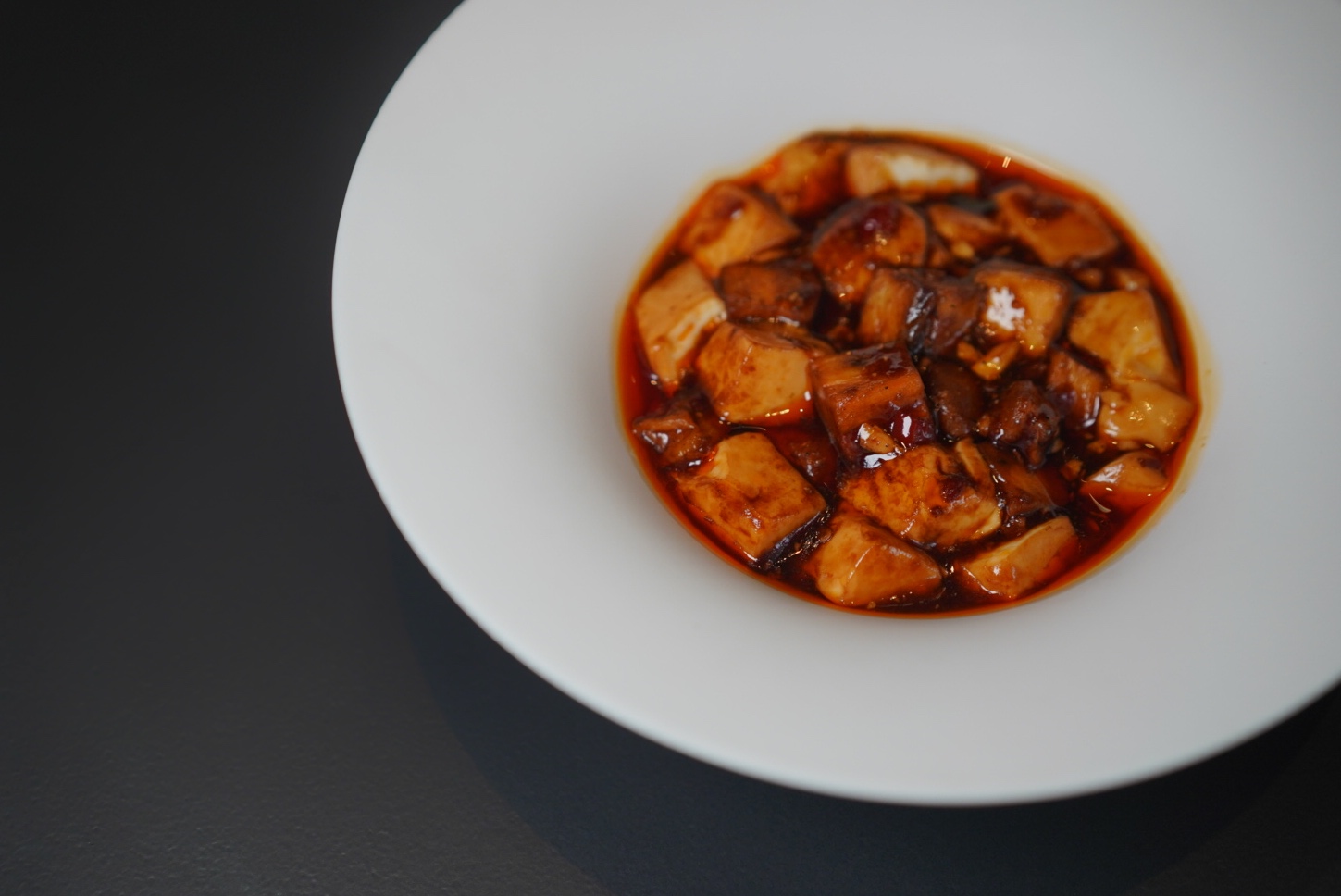 Mapo Tofu (RMB98) – Porcini cubes, homemade tofu, Sichuan peppercorn oil (a la carte add-on). Image by Sophie Steiner/That's
Mapo Tofu (RMB98) – Porcini cubes, homemade tofu, Sichuan peppercorn oil (a la carte add-on). Image by Sophie Steiner/That's
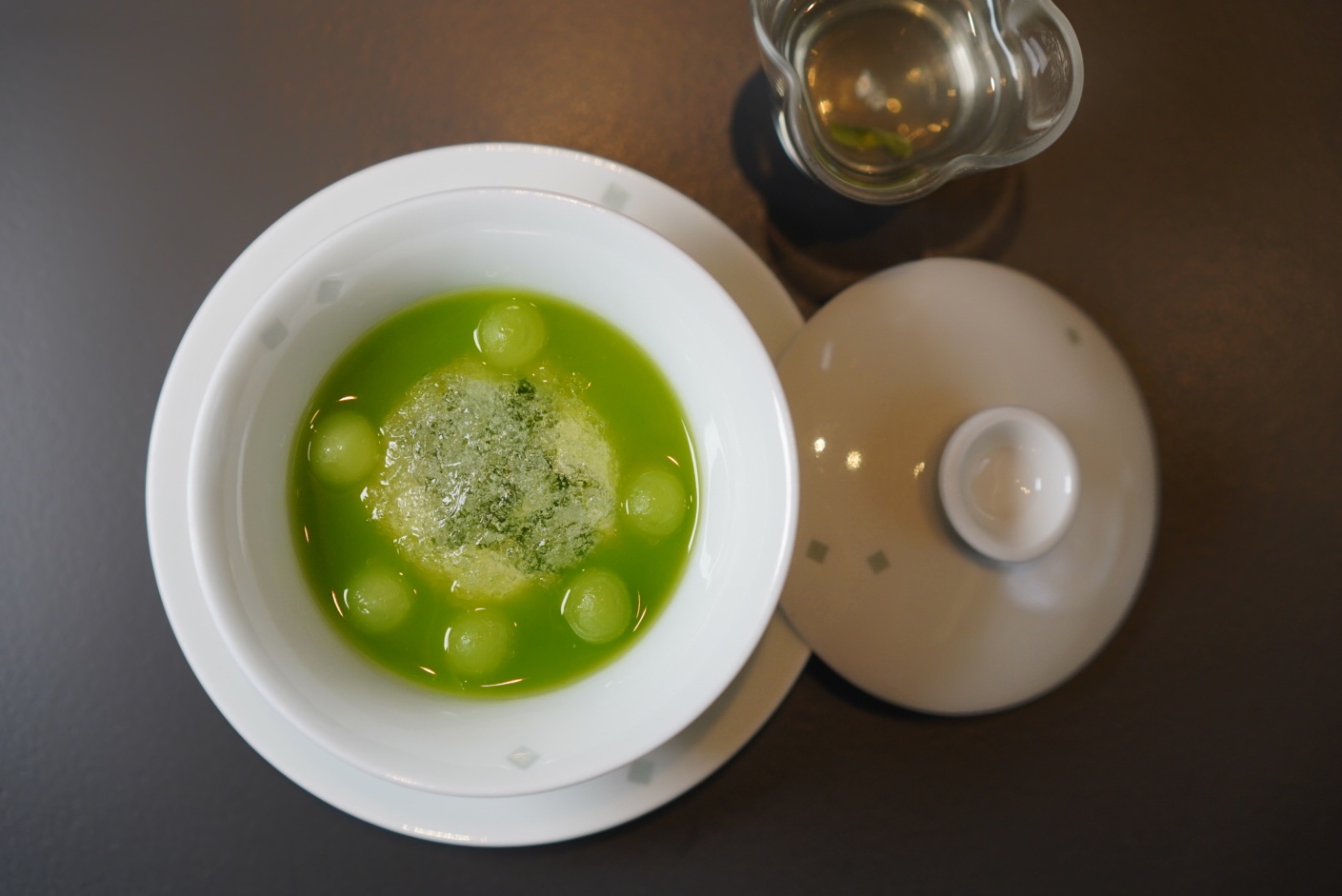
Image by Sophie Steiner/That's
Meant to imitate the gumminess of bird’s nest while still aligning with the restaurant’s veg-forward ethos, Gum Karaya – a tree secretion not unlike peach gum – is heaped in a glistening mound in a custom-made Jingdezhen ceramic bowl, swimming in a celtuce and bamboo pith soup.

Image by Sophie Steiner/That's
A hidden layer of homemade silken tofu lines the bottom, slurpable like steamed chawanmushi egg, juxtaposed against crunchy 'boba' spheres of celtuce stem.
 Furong (芙蓉 ) Egg (RMB88) – Fried egg yolk, egg white, ginger, vinegar. Image by Sophie Steiner/That's
Furong (芙蓉 ) Egg (RMB88) – Fried egg yolk, egg white, ginger, vinegar. Image by Sophie Steiner/That's
 Image by Sophie Steiner/That's
Image by Sophie Steiner/That's
A play on the Buyi minority dish of the same name, the climax course, Eight Treasures, is an abundant showcase of all things green – sweet peas, green beans, ginger melon, zucchini, Yunnan wild greens, brussels sprouts, celtuce, and rattan pepper sauce.

Image by Sophie Steiner/That's
Even the rice itself is dyed green – the result of mixing blue butterfly pea and yellow rapeseed flower – enhancing the dish’s fertile display of China’s most temporal of ingredients.
Arriving tableside still hissing and sizzling, the delectable contradiction of crackly scorched guoba rice edges and glossy soft kernels brings diners back for another serving.
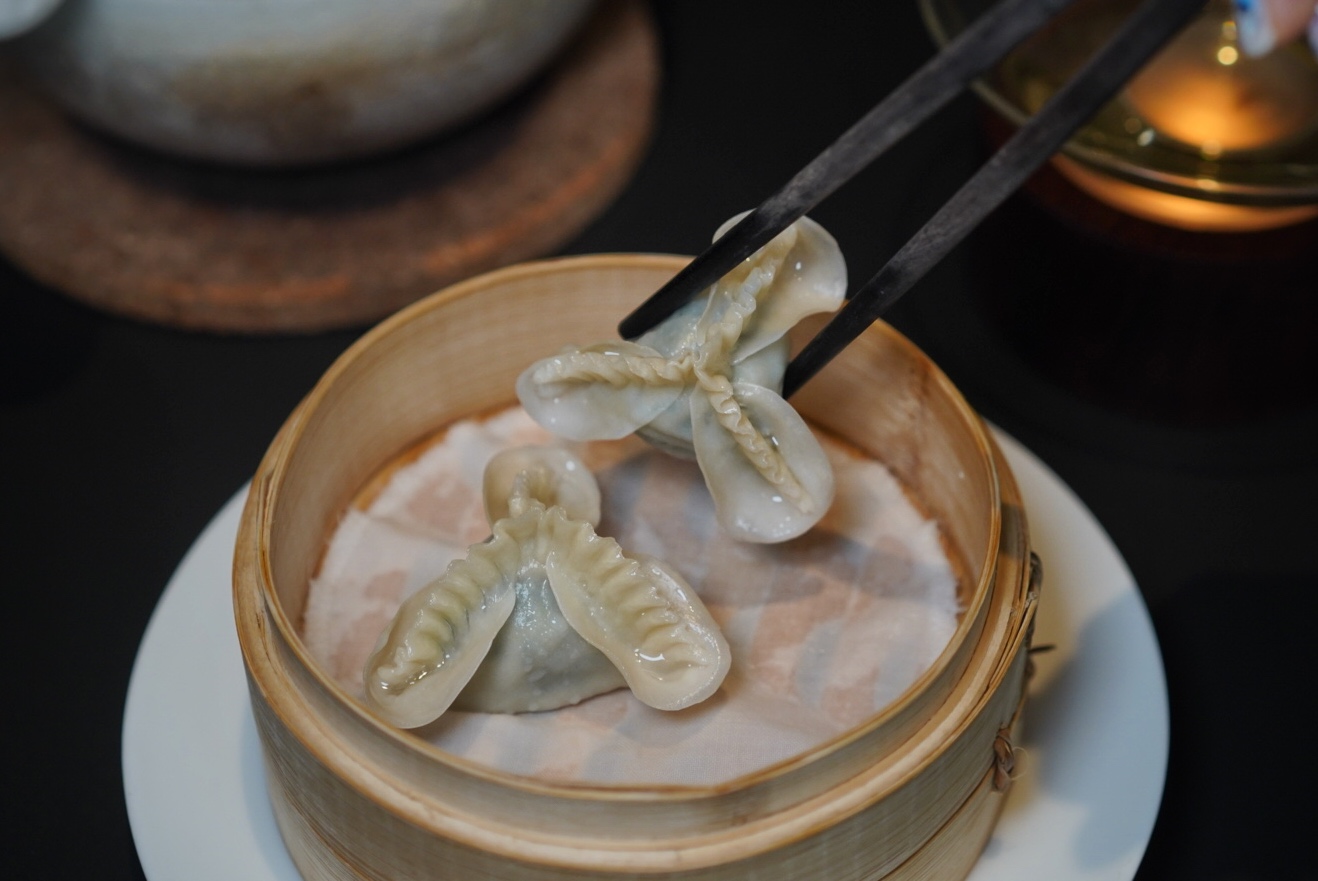 Hat Dumplings (RMB88/3 pieces). Image by Sophie Steiner/That's
Hat Dumplings (RMB88/3 pieces). Image by Sophie Steiner/That's
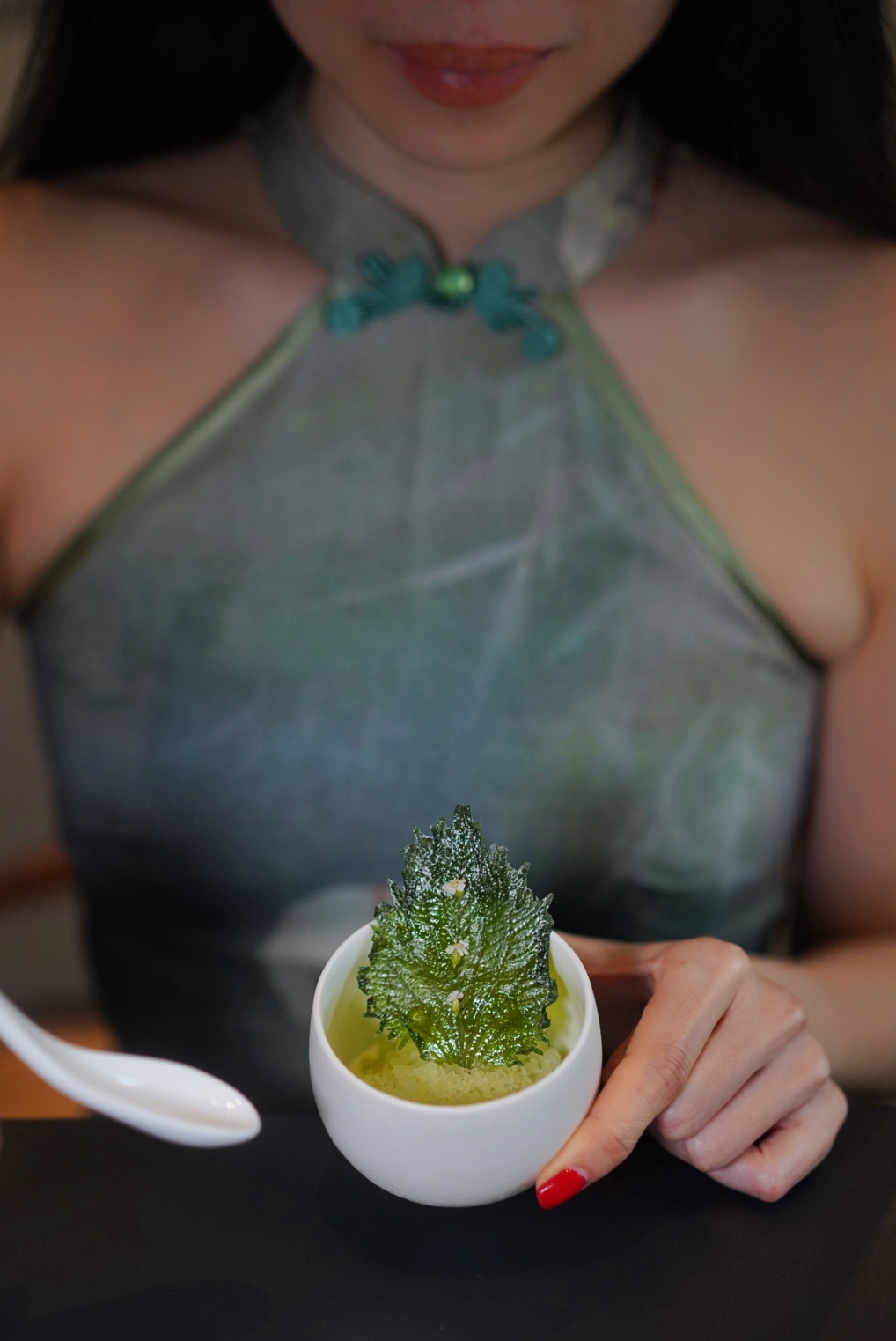
Image by Sophie Steiner/That's
A palate cleanser before dessert, the Shiso is a trifecta of seasonal fruits in granita form – green grape, yellow watermelon, and honeydew, sheathed by a paper-thin sliver of candied perilla leaf.

Image by Sophie Steiner/That's
Celery and Lily Bulb are customarily eaten together as xi qin chao bai he (西芹炒百合), a spring favorite in lower Yangtze River cuisine.
Fu He Hui takes it a step further, with oat milk and lily bulb ice cream encircled by a woven crown of fruit celery microgreens.
A drizzle of lemongrass and ginger infused Italian olive oil lends a vegetal aroma, tempered by the sweetness of ripe corn kernels hidden underneath the frozen treat.
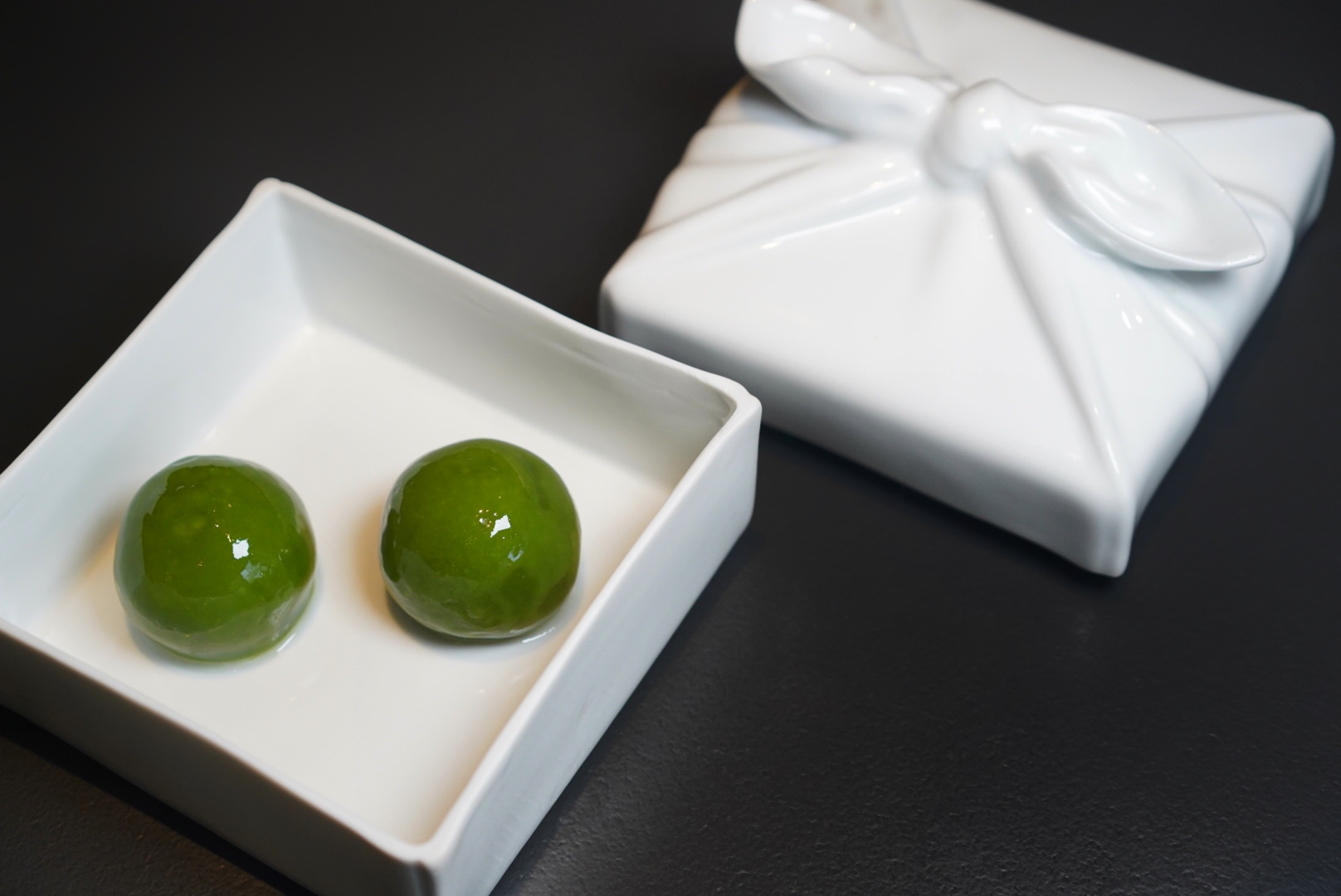
Image by Sophie Steiner/That's
 Qingtuan. Image by Sophie Steiner/That's
Qingtuan. Image by Sophie Steiner/That's
Symbolizing both the period of rebirth that aligns with the season and the Qing Dynasty archives of green classifications for dying clothes in the Forbidden City, the green hues throughout the meal carry diners naturally from one course to the next.
Fu He Hui 福和慧, 1037 Yuyuan Lu, by Jiangsu Lu 愚园路1037号, 近江苏路.
8 1/2 Otto e Mezzo Bombana
An extension of the three Michelin Star venue (of the same name) in Hong Kong, chef Umberto Bombana, executive chef Gabriele Delgrossi, and – joining the team this past summer – chef de cuisine Nicoló Rotella (previously of New Wave by Da Vittorio) have together recreated the same lux, fine dining affair on the north Bund at two Michelin Star venue 8 1/2 Otto e Mezzo Bombana, the That’s Shanghai 2022 Food & Drink Awards Restaurant of the Year.

Image by Sophie Steiner/That's
Big news to begin – for the first time since COVID, Bombana is now open on Sundays for both lunch and dinner, so guests can satisfy that Italian fine dining fix with a side of iconic Bund views every day of the week!
And now, onto the good stuff…
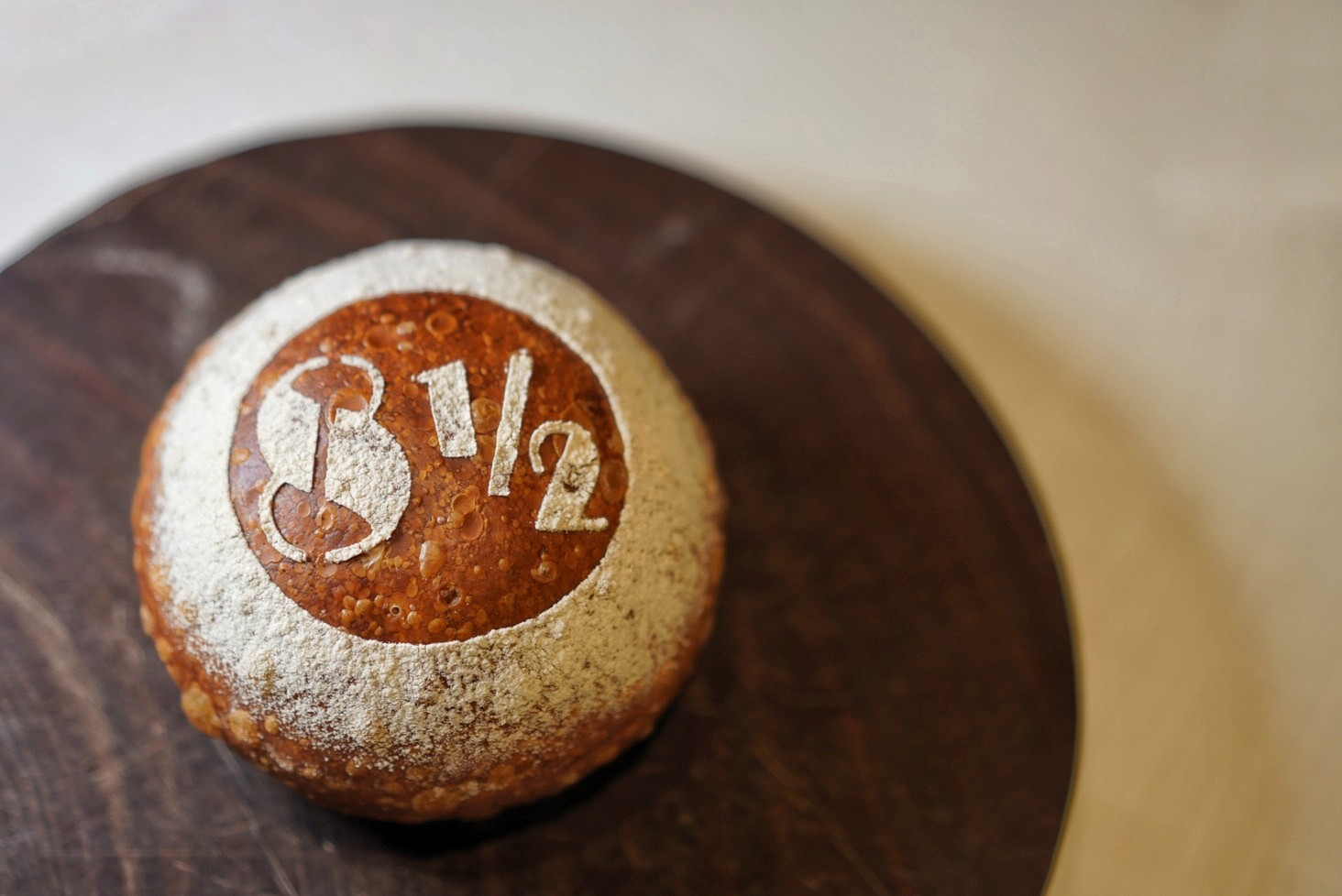
Image by Sophie Steiner/That's
Like all meals at Bombana, the newly launched and seasonally updated 4-Course Lunch Set (RMB888) begins with freshly baked bread, sliced tableside still steaming – filling the room with its yeasty perfume.

Image by Sophie Steiner/That's
It is presented with your choice of olive oil, select from an aromatic Sicilian blend to a delicately herbaceous Umbrian alternative with a slightly bitter, earthy finish.

Image by Sophie Steiner/That's
The long-standing signature amuse bouche of fresh mozzarella still remains, siphoned into demurely acidic tomato water and sprinkled with dried tomato powder, whetting the appetite for what’s to come.
If the team ever decided to change it, riots in the streets would undoubtedly ensue... with us at the helm.
It is that perfect.
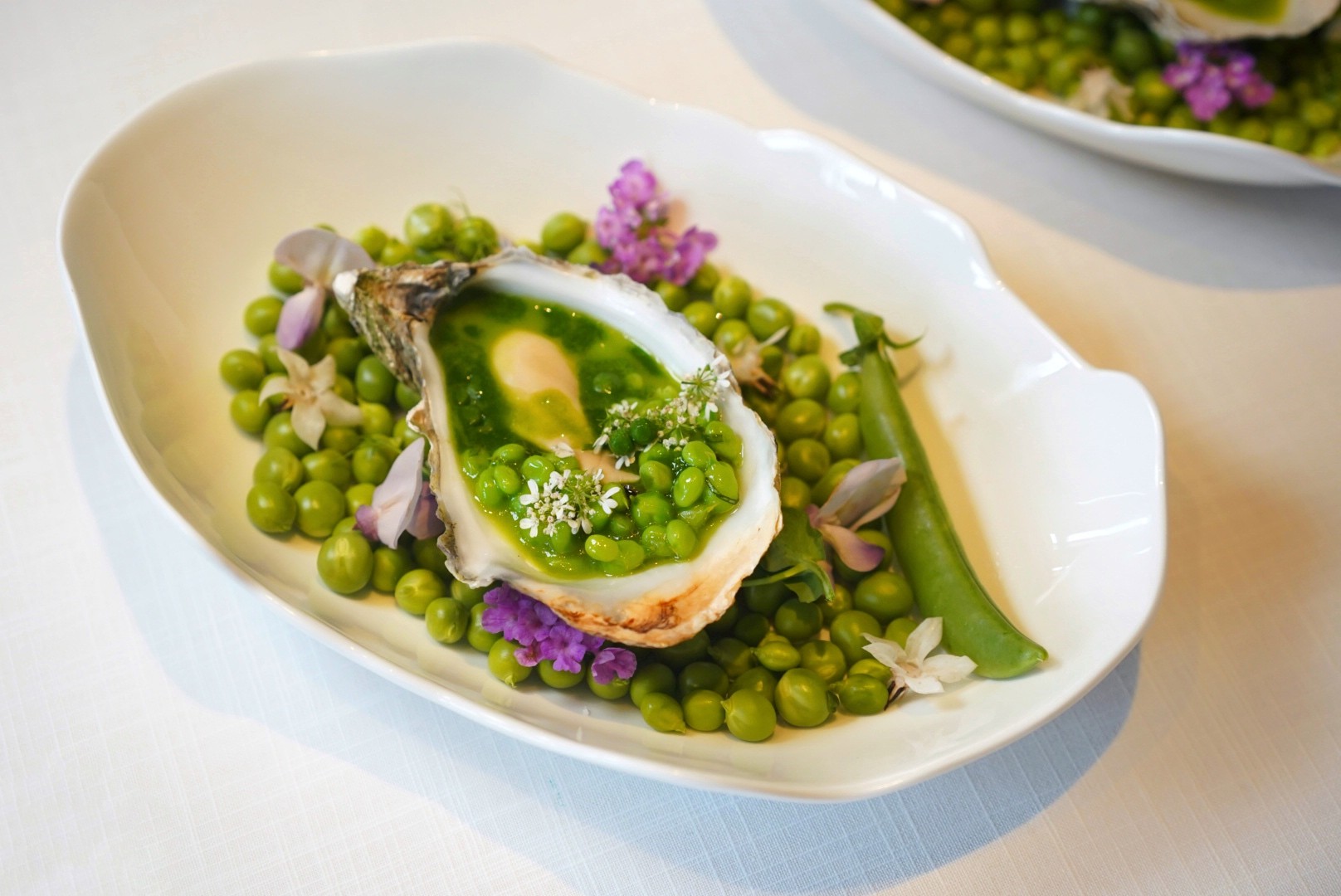
Image by Sophie Steiner/That's
An overt sign that spring has officially sprung, the seasonal lunch menu begins with a plump Ostrica No 1 French oyster marinated in ginger, basil, and a sweet pea extraction.
This top-quality crustacean is then par-cooked in its shell over open flame, the resulting slurp akin to being dumped by an ocean wave.
The addition of a coriander mint granita and Mediterranean herbs transforms the alliance into a veritable ménage à trois, bestowing these mollusks with their much-deserved aphrodisiac reputation.
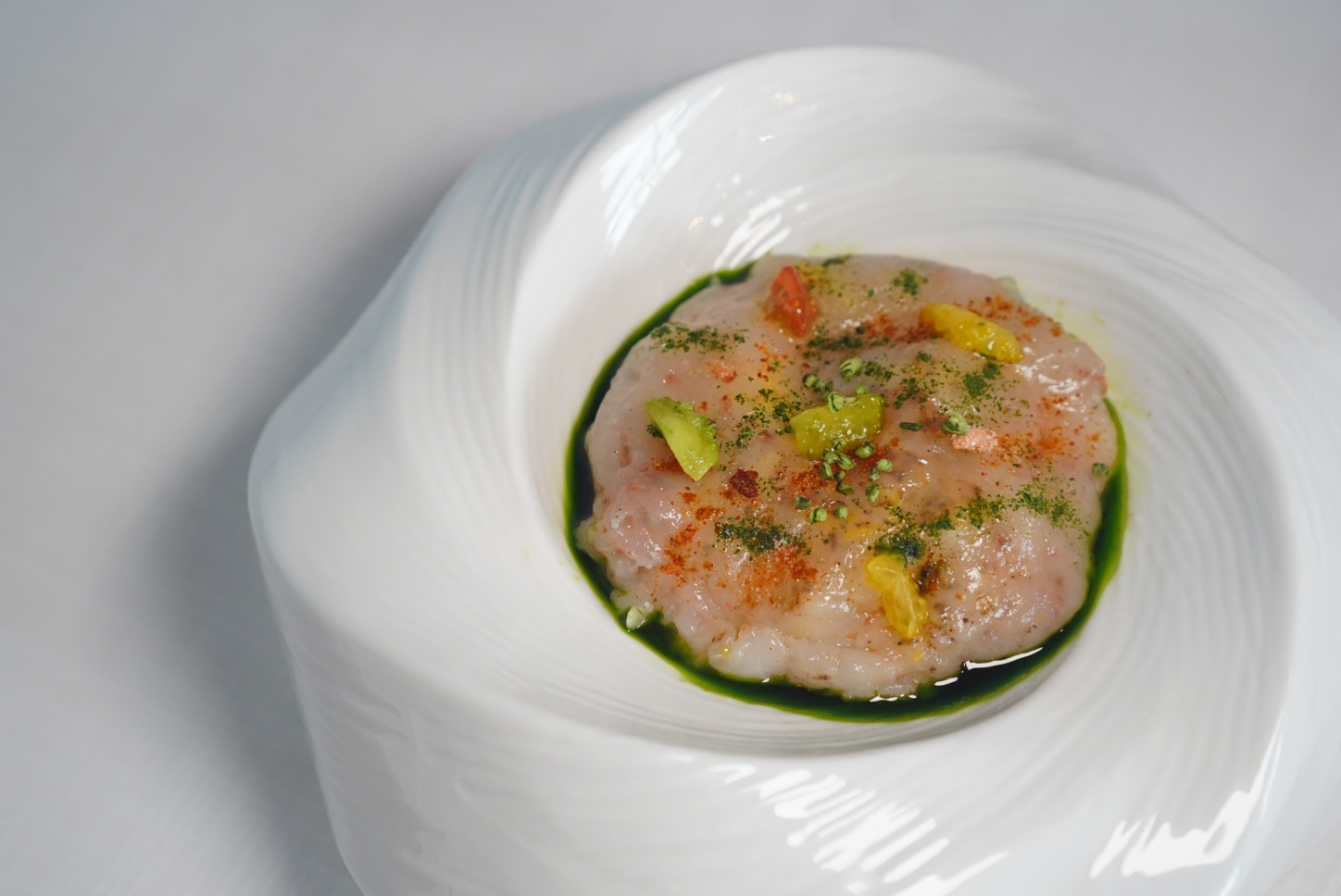
Image by Sophie Steiner/That's
Hailing from Italy’s Liguria region comes the humble Trofie – an artisanal twisted pasta, short and thin, conventionally tossed in an herbaceous pesto Genovese.

Image by Sophie Steiner/That's
Aligning with that same ethos, but elevating it a step further, the expertly al dente pasta is coated in a slick basil oil, clam water, and Qingdao tomato juice sauce, one that silkily coats each individual strand.
 Image by Sophie Steiner/That's
Image by Sophie Steiner/That's
Sheathed by a velvety Botan shrimp carpaccio that melts instantly into the heat of your tongue, tri-colored Qingdao tomatoes lend a pop of bright acidity, further magnified by a sip of Châteauneuf-du-Pape Clairette and Grenache Blanc blends, complex in its layered minerality and floral notes.

Image by Sophie Steiner/That's
For a main course, diners have two choices, the former being slow-cooked Cobia fish – prized for its firm meatiness.
The pastel symmetry is represented through one piece of fish being anchored to the plate by a drizzle of asparagus jus – crowned with alternating pleats of asparagus carpaccio – while the second is dribbled in that same asparagus jus.
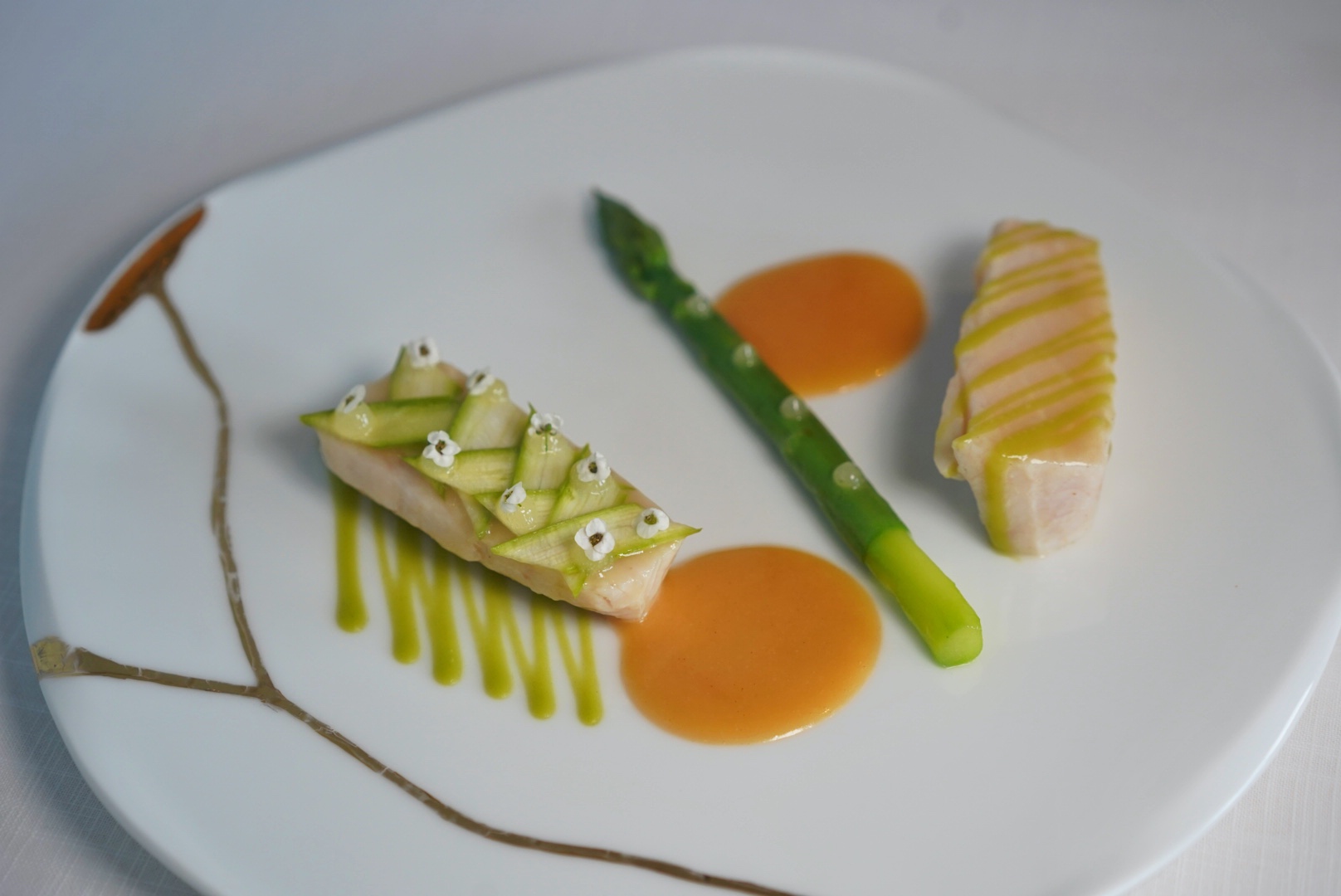 Image by Sophie Steiner/That's
Image by Sophie Steiner/That's
A miso beurre blanc dovetails the two preparations, with a lone poached Yunnan asparagus studded with lemon gel, bridging the two sides of the plates.

Image by Sophie Steiner/That's
The alternate main dish option is the Manzo, 24-hour slow-cooked Uruguayan Wagyu beef short ribs braised in Sichuan honey from the Chengdu Panda Research Center Biofarm, adorned with corn crisps, punchy wild onion slivers, mustard seeds, and leek flower.

Image by Sophie Steiner/That's
Steeped in a pool of veal jus, the ruddy bovine is plated atop a shmear of smoked corn cream, astride a fermented blueberry lacquered and barbecued Yunnan baby corn. The berry glaze is amplified by a fruity yet structured glass of 2018 San Marzano "Sessantanni" Primitivo di Manduria, Puglia, one that concurrently cuts through the meat's succulently rendered fat.
 Sgroppino. Image by Sophie Steiner/That's
Sgroppino. Image by Sophie Steiner/That's

Image by Sophie Steiner/That's
A tribute to the soft colors of the season, a quenelle of Guava sorbet perches atop a pistachio crumble, flanked by salted kumquat and basil ganache-encased five spice powder cake.
Pistachio-flecked dark cocoa tuille adds a textural crunch, while drops of guava gel and dehydrated guava crisps further enhance the plate’s temporal tastes.
Resident head pastry chef Jacky Zhao also continues to wow us with the revamped set of Petit Fours.

Image by Sophie Steiner/That's
Rotating based on seasonality, demand, and the whim of Zhao himself, expect a smattering of sweet endings like mini black currant macaroons; fluffy yuzu citrus and cheese filled frittella donut holes; raspberry chocolate bonbons; pistachio mousse white chocolate pearls; and chocolate coffee ganache squares topped with toasted hazelnut.
All are artfully presented in bone-white custom-made serving dishes designed to fit the petite four display.
Thoughtful wine pairings curated by 2024 Michelin Sommelier Award winner Ervin Ong are also available for lunch at RMB488 for three glasses.
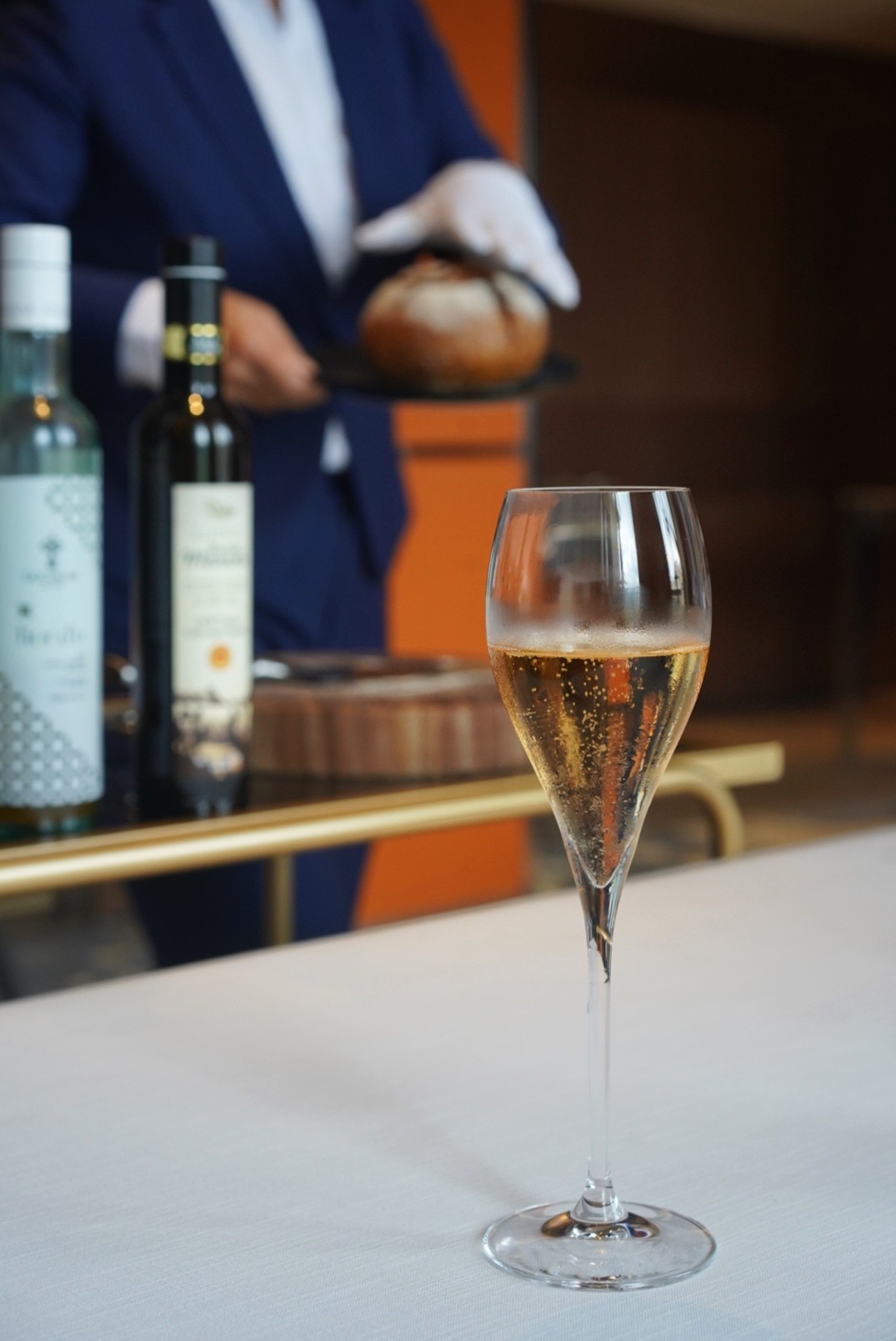
Image by Sophie Steiner/That's
In addition to lunch, the restaurant also offers:
A seven-course Tradition Menu (RMB2,280) with optional wine pairings for an additional RMB1,980
A nine-course Innovation Menu (RMB3,080) with optional wine pairings for an additional RMB2,580
Plus an expansive list of a la carte starters, pastas and mains.
8 1/2 Otto e Mezzo Bombana, 6-7/F, 169 Yuanmingyuan Lu, by Beijing Dong Lu 圆明园路169号6, 7楼, 近北京东路.
READ MORE
3 Meaty New Menus: Cages, 18 Hours BBQ & Alimentari

2 Fiery New Menus: High Yaki The Sea & La Brise 523

[Cover image by Sophie Steiner/That's]






















0 User Comments